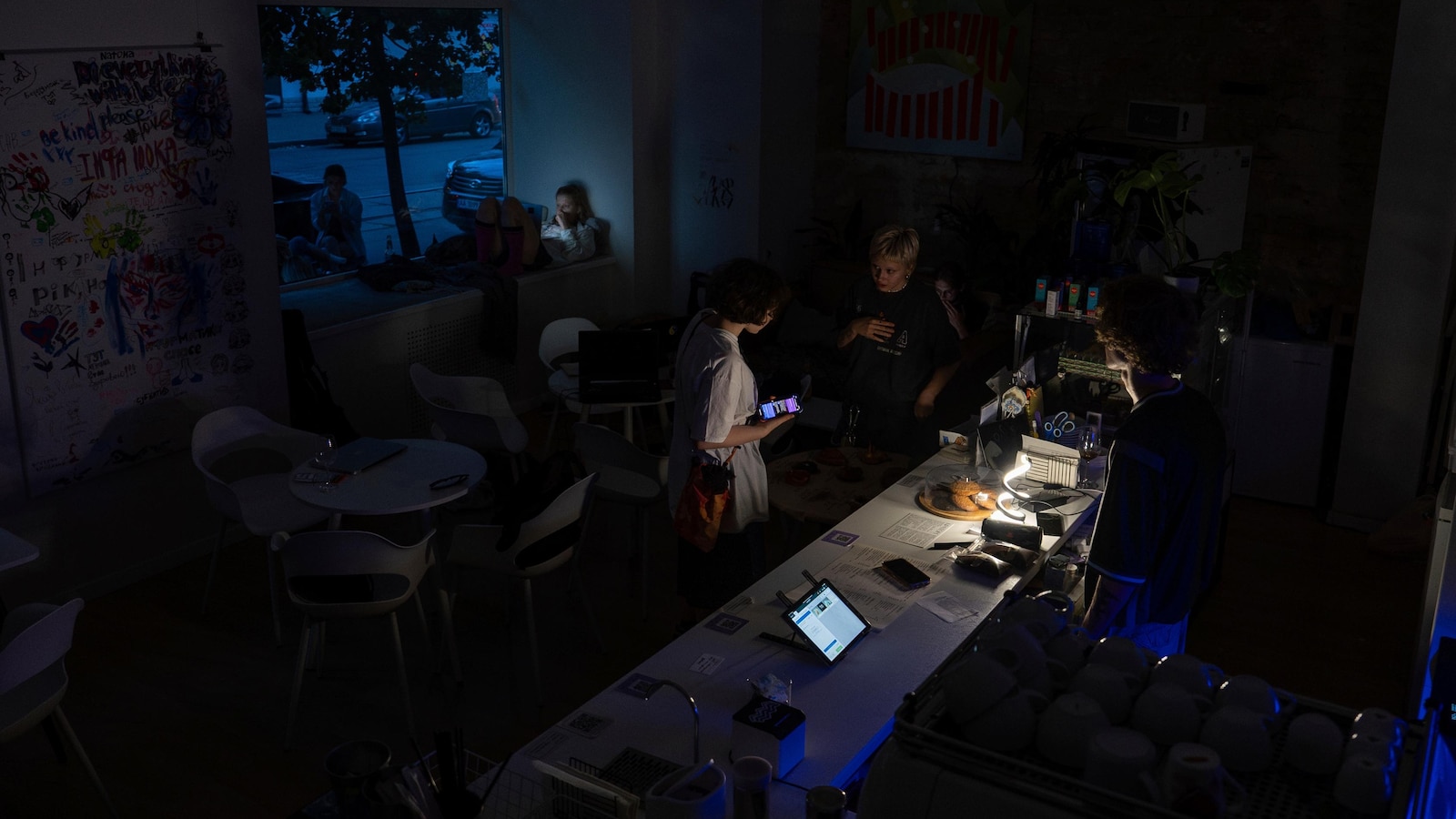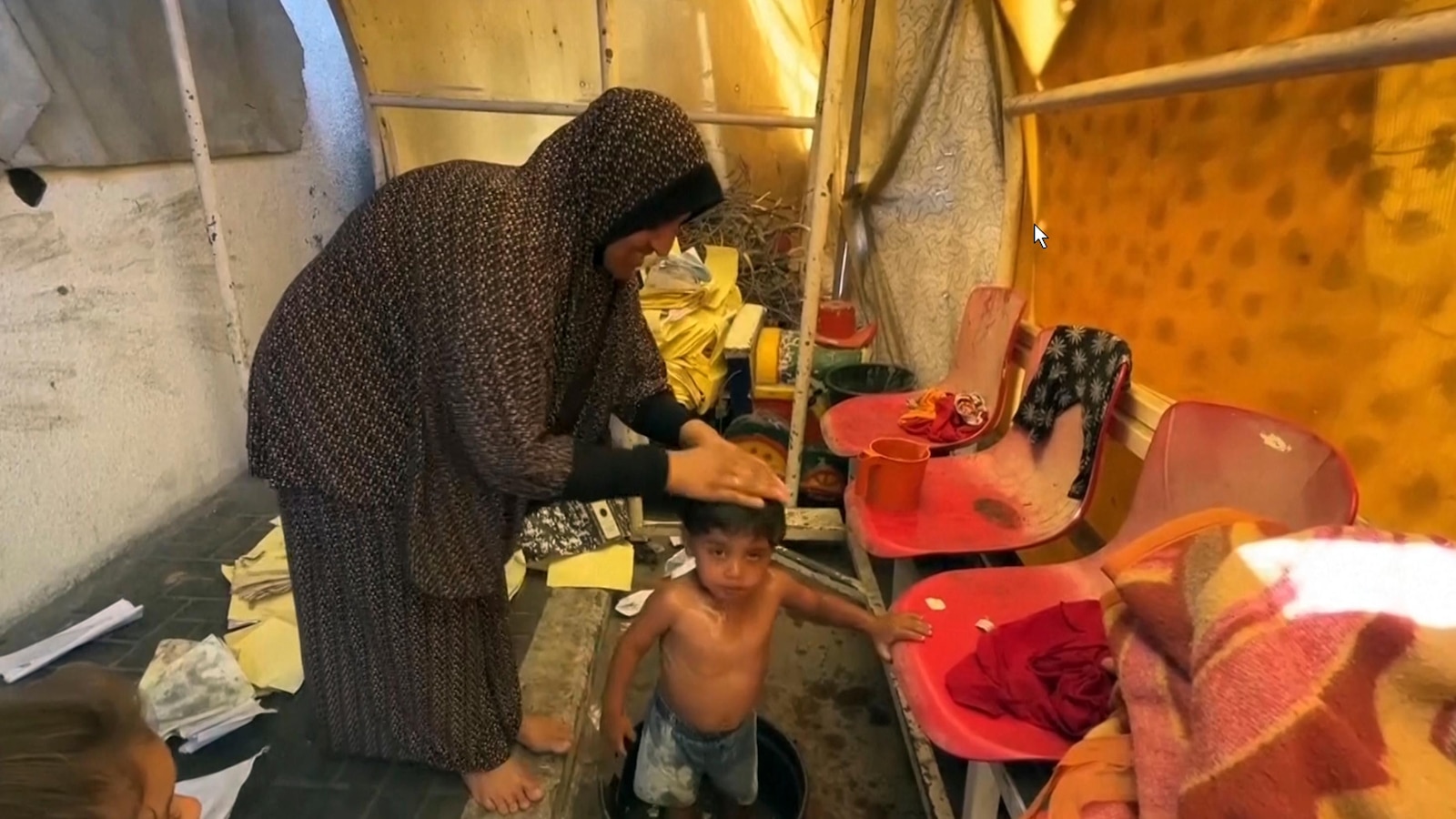
KYIV, Ukraine — During daytime, entire districts of Ukraine’s capital are disconnected from the power grid to save energy. Traffic lights stop, choking traffic, accompanied by the constant rumble of generators installed outside cafes and shops.
Ukraine, including Kyiv, is struggling to cope with a new wave of rolling blackouts after relentless Russian attacks took out half the country’s power generation capacity.
Residents and businesses of Kyiv are adapting to the absence of electricity using generators, power banks, and flashlights and even recalculating their bathroom visits. Heavy damage inflicted to the country’s power system has left millions feeling uncertain about Ukraine’s ability to meet the national electricity demand after the warm weather months are over and the weather turns cold.
“I light my apartment as our grandparents used to — with candles and small flashlights,” said Rudoy, a 40-year-old insurance agent from Israel who relocated from Tel Aviv to Kyiv in 2023 after Russia launched its full-scale invasion of Ukraine on Feb. 24, 2022.
He said that he wanted a new life despite the war — to live side-by-side with old friends and reside in a milder climate — but he hadn’t foreseen the inconveniences of living without power. Rudoy bought an apartment on the seventh floor of a newly built 25-story high rise with no gas system or water supply that’s wholly dependent on electricity.
“I have to adjust my life to the blackout schedules, otherwise it is impossible to live normally — not even to use a toilet at times,” Rudoy told The Associated Press.
A friend in a nearby district typically has power when he doesn’t, which makes his life easier. Work often gets done at a cafe that has a generator, but there’s a catch.
“Even if you find a free table at a cafe nearby, working generators are very noisy and spread diesel fumes,” he said. “That’s why not many cafes that operate during blackouts are actually good to work in.”
Ukraine is struggling to meet electricity demand as systematic attacks on its power infrastructure have intensified since March, forcing utilities to ration household supplies over the last three months. The country’s top officials repeatedly called on allied countries to provide more air defense systems to protect its power plants from Russian missiles and drones, but tangible damage had already been inflicted.
The blackouts in Kyiv are the worse since the early months of the war when Russian strikes on the country’s power grid led to major winter-time blackouts that led to authorities setting up communal heating areas and hundreds of emergency points where residents could drink tea, recharge their phones and get help.
“As of today, due to missile and drone attacks, we have lost 9.2 gigawatt of electricity (generating capabilities),” Ukrainian Prime Minister Denys Shmyhal said in early June. Despite having the capacity to import 2.2 gigawatts of electricity from European countries, Ukraine is importing 1.7 gigawatts, Shmyhal said.
Apart from direct imports, Ukraine is working to attract foreign investment to its private energy sector. At a summit in Berlin this month, Ukraine presented investment projects that could enable additional capacity of 1 gigawatt, said Volodymyr Kudrytskyi, the head of power utility Ukrenergo.
But in the short-term, Ukraine’s readiness before next winter looks highly uncertain considering the damages to its energy system, the feasible outlook for reconstruction, and electricity demand.
Constant blackouts bring disruption to many city residents’ daily rituals. Official power outage schedules published regularly by Ukrainian energy operators make it easier to plan the day. But energy companies often resort to unscheduled emergency blackouts when the city overconsumes electricity at the peak hours.
The circumstances force businesses and households to rely on alternative sources of electricity and light to get through a day as the summer heat makes more and more people use air conditioners. And many are worried the situation could get even worse.
Small businesses don’t always keep up, with the energy situation rapidly changing every week.
Oleksandr Solovei, the 25-year-old owner of Informatyka coffee shop in Kyiv, just plans to buy a generator, which typically costs around $1,000, to keep his business open during blackouts.
In the meantime, he must improvise. “We prepare hot water in advance, to cook matcha and teas. Cooking coffee at times like this is impossible. The coffee machine consumes too much energy,” Solovei told the AP.
A fiber-optic internet cable and a power bank that keeps the router on attract patrons to Informatyka, where they can work on their laptops. Still, customers have thinned out since the blackouts began.
“We think the situation will get worse (by winter),” Solovei said. “We already plan to buy a generator, powerful enough to brew coffee, light the space, and charge the devices of our visitors. We are preparing for a hard winter.”
___
Follow the AP’s coverage of the war at https://apnews.com/hub/russia-ukraine
Russia’s ongoing attacks on Ukraine’s infrastructure have led to a dire situation in the country, with emergency blackouts affecting millions of citizens. The attacks, which have targeted key power plants and electricity grids, have left many areas without access to electricity, heating, and other essential services.
The most recent wave of attacks began in early February, when Russian forces launched a series of airstrikes on power plants in eastern Ukraine. These attacks have caused significant damage to the country’s already fragile infrastructure, leading to widespread power outages and disruptions in essential services.
The impact of these blackouts has been felt across the country, with hospitals, schools, and homes left without electricity. In some areas, residents have been forced to rely on generators or alternative sources of power to meet their basic needs. The lack of electricity has also disrupted communication networks, making it difficult for authorities to coordinate emergency response efforts.
The situation is particularly concerning given the harsh winter conditions in Ukraine, with temperatures dropping below freezing in many parts of the country. Without access to heating or electricity, many vulnerable populations, such as the elderly and children, are at risk of suffering from cold-related illnesses or even death.
The attacks on Ukraine’s infrastructure have been condemned by the international community, with many countries calling for an immediate ceasefire and a peaceful resolution to the conflict. The United Nations has also expressed concern over the humanitarian impact of the blackouts, urging all parties involved to prioritize the safety and well-being of civilians.
In response to the crisis, Ukrainian authorities have been working tirelessly to restore power to affected areas and provide assistance to those in need. Emergency shelters have been set up to accommodate those who have been displaced by the blackouts, and efforts are being made to ensure that essential services are maintained despite the ongoing attacks.
As the situation continues to unfold, it is clear that urgent action is needed to address the humanitarian crisis in Ukraine. The international community must come together to support the country and its people during this difficult time, and work towards a peaceful resolution that will bring an end to the violence and suffering caused by Russia’s attacks on Ukraine’s infrastructure.


